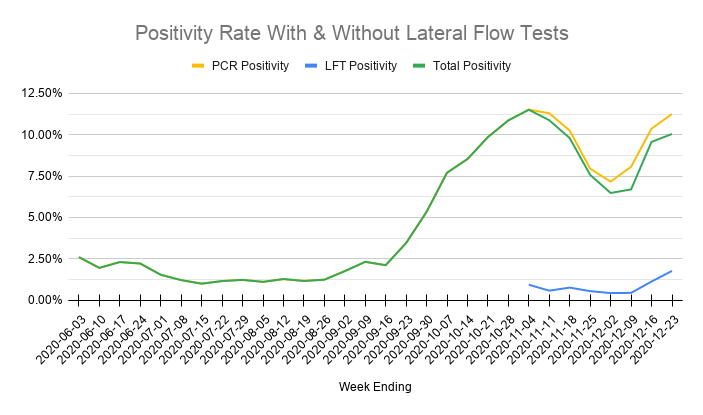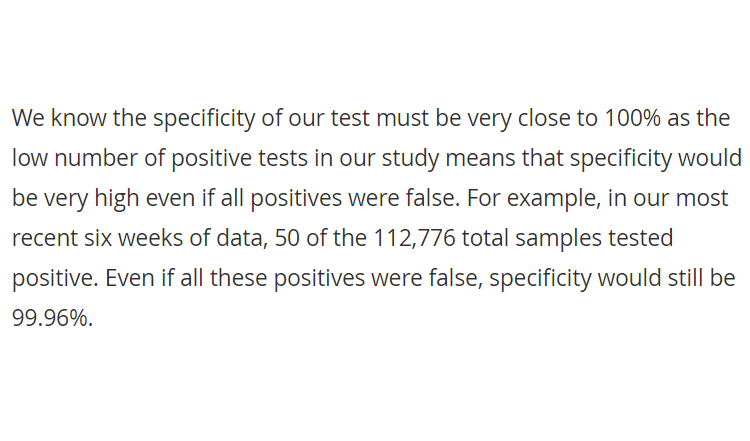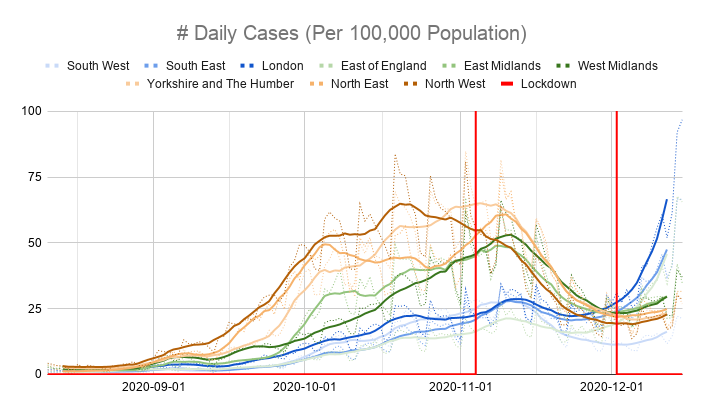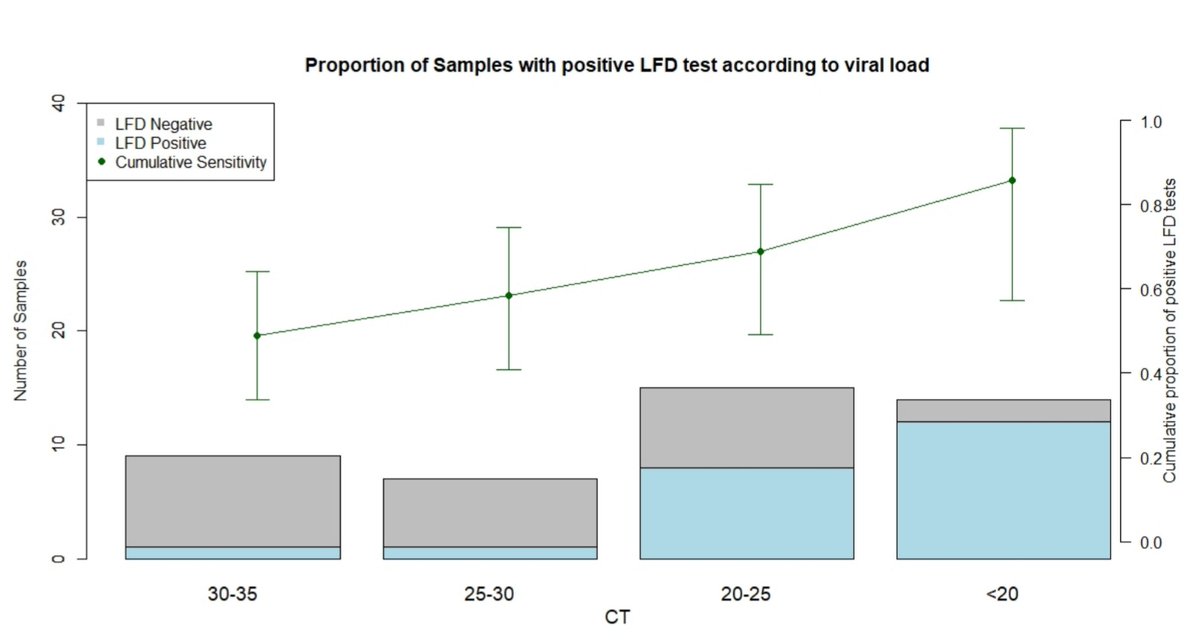
The interim report on the Liverpool community testing trial is now out, with more complete results for the sensitivity of the tests, as well as lots of additional information and data about the trial.
h/t @angelaraffle and @scb909
liverpool.ac.uk/coronavirus/re…
h/t @angelaraffle and @scb909
liverpool.ac.uk/coronavirus/re…
Firstly, more results have been released, showing the Innova LFTs only found 40% of people who were PCR positive.
More relevantly, they missed 17.6% of people positive at Ct 20 or lower, and 45.5% at Ct 20-25.
So overall they missed a third of people with "higher viral load".
More relevantly, they missed 17.6% of people positive at Ct 20 or lower, and 45.5% at Ct 20-25.
So overall they missed a third of people with "higher viral load".

Interestingly though, when they went back and reassessed test results based on photos of the devices (with a third person checking if the result differed from the initial one), their performance improved significantly. Finding 83% of PCR positives at or below Ct 25. 

If I'm reading this right, it suggests the issue might be more to do with clarity of results and how easy they are to interpret than the underlying sensitivity of the test.
Which may partly explain why large scale real world testing performed so much worse than lab-based trials.
Which may partly explain why large scale real world testing performed so much worse than lab-based trials.
As a result, changes are being made to the training materials for people working at test sites using lateral flow tests. And Test & Trace are now recommending that where possible more than one person should assess test results.
We'll see if this improves their performance.
We'll see if this improves their performance.
There were also concerns about the fact that at least four different versions of the test were provided during the trial, with variations in the size and shape of sample windows.
All performance checks were done centrally and no quality control data was provided to Liverpool.
All performance checks were done centrally and no quality control data was provided to Liverpool.

On the bright side though, the trial managed to test 36% of the city's 498,000 people, including 25% with lateral flow tests.
And the Innova LFTs identified 897 asymptomatic positives who might have been missed otherwise, despite the tests' lower than expected sensitivity.
And the Innova LFTs identified 897 asymptomatic positives who might have been missed otherwise, despite the tests' lower than expected sensitivity.
However, take up of the tests was lowest in the areas that probably needed them the most.
The most deprived parts of the city saw half as many people taking the test (16.8% vs 33.4%) as in the least deprived areas, but they had double the positivity rate (1.0% vs 0.5%).
The most deprived parts of the city saw half as many people taking the test (16.8% vs 33.4%) as in the least deprived areas, but they had double the positivity rate (1.0% vs 0.5%).

Unsurprisingly the report says "fear of not having adequate support to isolate was a major barrier to taking up testing".
People in the poorest areas couldn't afford to risk testing positive and having to self-isolate.
Which is probably a general issue with Test & Trace.
People in the poorest areas couldn't afford to risk testing positive and having to self-isolate.
Which is probably a general issue with Test & Trace.
There were also issues with getting people to take a PCR test to confirm any positive LFT results.
At first messages came from the central Test & Trace system, but only 19% of people who tested positive with LFTs booked a confirmatory PCR test.
At first messages came from the central Test & Trace system, but only 19% of people who tested positive with LFTs booked a confirmatory PCR test.
This improved to 79% when they started sending a text message from NHS Liverpool telling people to book a second test, and a new dedicated test site was opened to handle confirmatory PCR tests.
Highlighting the importance of local expertise and trust.
Highlighting the importance of local expertise and trust.

Overall it's a mixed picture. LFTs didn't perform as well as expected, but still found hundreds of cases that probably would have been missed otherwise.
However, there's no conclusive evidence this reduced cases or hospital admissions, which were falling when the trial began.
However, there's no conclusive evidence this reduced cases or hospital admissions, which were falling when the trial began.

Update: Thanks to @quistak, who develops lateral flow tests, for some clues as to what might be causing the issues with reading results on the Innova tests, based on what's shown in the report.
https://twitter.com/quistak/status/1345087238363705345?s=19
• • •
Missing some Tweet in this thread? You can try to
force a refresh






















